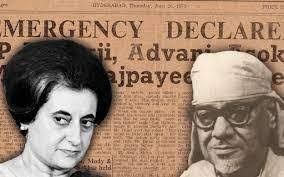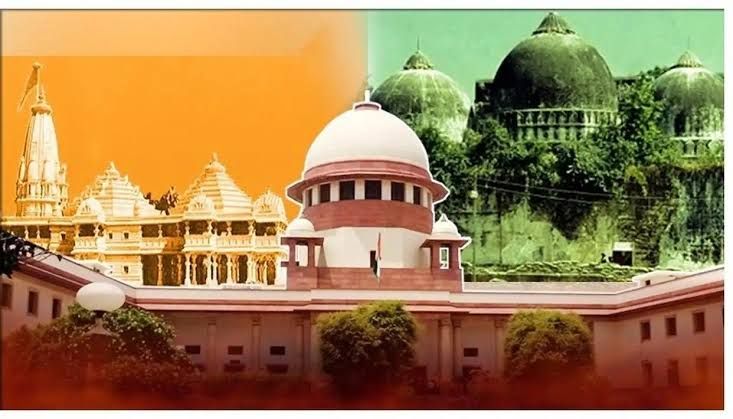Demystifying the Indira Nehru Gandhi v. Raj Narain (1975) Saga

Author: Sneha 2nd year student LL.B. Professional, Department of Law, Kurukshetra University.
To the Point:
The landmark judgement in Indira Nehru Gandhi v. Raj Narain (1975) established the crucial doctrine of “Basic Structure” within the Indian Constitution, holding that even Parliament cannot alter its core principles. This article dissects the case, examining the allegations of electoral malpractices against Ms. Gandhi, the High Court’s verdict, and the Supreme Court’s pivotal pronouncement on constitutional sanctity.
The Proof:
In the 1971 Lok Sabha elections, Ms. Gandhi, then Prime Minister, faced a petition by Raj Narain contesting her victory in Rae Bareilly due to alleged electoral malpractices. The Allahabad High Court, in a landmark 1975 verdict, found her guilty, unseating her from Parliament and barring her from public office for six years. This triggered a political crisis, culminating in the imposition of the Emergency.
The Genesis: An Electoral Challenge
In 1971, Indira Gandhi, riding a wave of populism, secured a landslide victory in the Lok Sabha elections. However, her win in the Rae Bareilly constituency was challenged by Raj Narain, her defeated opponent. Narain alleged electoral malpractices, including the misuse of government machinery and bribery, by Gandhi and her party workers.
The Allahabad High Court, in a landmark judgement in 1975, upheld Narain’s petition. Justice Jag Mohanlal Sinha found Gandhi guilty of corrupt practices and declared her election null and void. He also barred her from contesting elections for six years.
The Legal Tussle: From High Court to Apex Court
Gandhi challenged the High Court verdict in the Supreme Court. The apex court, in a split decision, upheld the disqualification but reduced the ban to six months. This meant Gandhi could contest the upcoming by-election but had to vacate her seat in the meantime.
Emergency: Democracy in the Shadows
The Allahabad High Court judgement and the subsequent legal battle triggered a political tsunami. Fearing erosion of her authority and facing mounting dissent, Gandhi, in a swift and controversial move, declared a national emergency on June 25, 1975.
The emergency, ostensibly imposed to tackle internal and external threats, suspended fundamental rights, muzzled the press, and led to mass arrests of opposition leaders and activists. Gandhi’s government also used the emergency to amend the Constitution, retrospectively validating her election and overriding the Allahabad High Court judgement.
Legal Ramifications: A Web of Challenges
The emergency and the constitutional amendments triggered a flurry of legal challenges. Several petitions were filed in the Supreme Court, questioning the validity of the emergency, the amendments, and Gandhi’s continued premiership.
In a series of landmark judgements, the Supreme Court upheld the imposition of the emergency but struck down the constitutional amendments that protected Gandhi from disqualification. This meant she had to step down as Prime Minister and face a by-election.
Aftermath: A Pyrrhic Victory and a Nation Scarred
Gandhi, riding on the sympathy wave generated by the emergency, won the by-election with a massive margin. However, the emergency left deep scars on Indian democracy. The erosion of civil liberties, the suppression of dissent, and the authoritarian turn of the government tarnished Gandhi’s legacy and led to her defeat in the 1977 general elections.
Enduring Significance: A Case Study in Law and Politics
The Indira Nehru Gandhi vs. Raj Narain case remains a pivotal moment in Indian legal and political history. It highlights the delicate balance between democratic principles and executive power, the importance of an independent judiciary, and the potential pitfalls of emergency measures.
The case also raises crucial questions about the role of law in times of crisis, the limits of judicial activism, and the relationship between the judiciary and the elected government.
Abstract:
Ms. Gandhi challenged the High Court’s verdict in the Supreme Court, primarily arguing that Article 105 of the Constitution granted her immunity from legal proceedings while in office. The apex court, however, in a split decision by a 13-judge bench, delivered a watershed moment in Indian jurisprudence. While upholding the High Court’s finding of electoral malpractices, the court divided on the crucial issue of parliamentary immunity. The Indira Nehru Gandhi vs. Raj Narain case marked a critical juncture in India’s legal landscape, where the judiciary asserted its role as the guardian of the Constitution. The judgment, delivered by Justice Jag Mohanlal Sinha, not only declared the election of Indira Gandhi void but also barred her from holding public office for six years. This landmark decision set a precedent for ensuring fair and transparent elections, irrespective of the political stature of the individuals involved.
The political climate in India during the 1970s was marked by significant turmoil. The then Prime Minister, Indira Gandhi, faced an electoral challenge from her opponent, Raj Narain, in the 1971 general elections. The aftermath of this election led to a legal saga that would test the foundations of Indian democracy.
Background:
The spark for the legal battle was ignited when Raj Narain filed a petition challenging Indira Gandhi’s victory in the 1971 elections from the Rae Bareli constituency. The crux of the matter was the use of government resources and machinery for electoral purposes by Indira Gandhi, thereby allegedly violating the principles of fair play in the electoral process.
The case hinged on allegations of corrupt electoral practices, including the misuse of government officials and resources during the election campaign. Raj Narain contended that such practices undermined the democratic ethos of free and fair elections and sought the nullification of Indira Gandhi’s election.
Legal Issues:
- Corrupt Practices and Election Malpractices: The primary legal issue in the case revolved around corrupt practices during the election. The petitioner argued that Indira Gandhi’s election involved the use of government resources for campaigning, giving her an unfair advantage. This raised questions about the integrity of the electoral process and the need for a level playing field.
- Constitutional Validity of Election: The case also delved into the constitutional validity of Indira Gandhi’s election, challenging the very essence of democratic representation. The petitioner argued that the election was tainted, and the results did not reflect the genuine will of the people.
- Judicial Independence: As the case unfolded, questions arose about the independence of the judiciary. The legal proceedings involved significant scrutiny of the government’s actions, and the court’s impartiality became a crucial aspect of the proceedings.
The Judgment:
The verdict in the Indira Gandhi vs. Raj Narain case, delivered by Justice Jagmohanlal Sinha, sent shockwaves through the political corridors of India. The court ruled in favor of Raj Narain, holding Indira Gandhi guilty of electoral malpractices and declaring her election from Rae Bareli void.
The judgment was unprecedented, as it marked the first instance of a sitting Prime Minister in India being unseated by a court order. The court’s decision underscored the judiciary’s commitment to upholding the rule of law and ensuring fair elections, even if it meant challenging the highest echelons of political power.
Impact on Indian Democracy:
- Erosion of Political Authority: The legal battle and the subsequent court ruling significantly eroded Indira Gandhi’s political authority. The charismatic leader, who had been at the helm of Indian politics, faced a severe blow to her credibility and popularity.
- Strengthening of Judicial Independence: The case bolstered the perception of judicial independence in India. The judiciary demonstrated its willingness to hold those in power accountable for their actions, emphasizing the importance of a strong and impartial judiciary in a democratic system.
- Constitutional Amendments: In response to the judgment, the Indian Parliament swiftly enacted the 39th Amendment to the Constitution, which sought to shield the Prime Minister and other elected representatives from legal challenges related to electoral malpractices. This move, however, stirred a debate about the balance of power between the executive and judiciary.
- Legacy in Electoral Law: The Indira Gandhi vs. Raj Narain case played a pivotal role in shaping electoral laws in India. Subsequent legal reforms focused on curbing corrupt practices, ensuring a level playing field, and safeguarding the integrity of the electoral process.
Case Laws: The majority judgement, led by Chief Justice A.N. Ray, invoked the nascent doctrine of “Basic Structure” established in the Kesavananda Bharti case (1973). It held that Article 105 did not grant absolute immunity, as it could not alter the constitution’s “basic structure,” which included separation of powers and judicial review. However, four dissenting judges, led by Justice Jag Mohanlal Sinha, maintained that Article 105 enshrined absolute immunity for Members of Parliament, safeguarding them from judicial scrutiny.
The judgment referred to various case laws, including Halsbury’s Laws of England, emphasizing the need for a free and fair electoral process. Additionally, the court relied on the principles laid down in the famous case of A.K. Gopalan v. State of Madras (1950) to underscore the significance of fundamental rights, particularly the right to equality and a fair trial.
Conclusion: The Indira Nehru Gandhi v. Raj Narain case remains a contentious but pivotal chapter in Indian legal history. While Ms. Gandhi’s conviction ultimately did not stand due to subsequent constitutional amendments, the case solidified the “Basic Structure” doctrine, setting a precedent for judicial checks on legislative overreach. It underscored the principle that even the highest office-bearers are not above the law and that the Constitution’s core principles are inviolable. This case continues to resonate in contemporary legal discourse, shaping the delicate balance between parliamentary sovereignty and judicial oversight in India’s vibrant democracy. The decision sent a strong message that no one, regardless of their political standing, is above the law. This landmark judgment continues to be cited in legal circles as a beacon of justice and a reminder of the judiciary’s role in safeguarding the democratic fabric of the nation.



